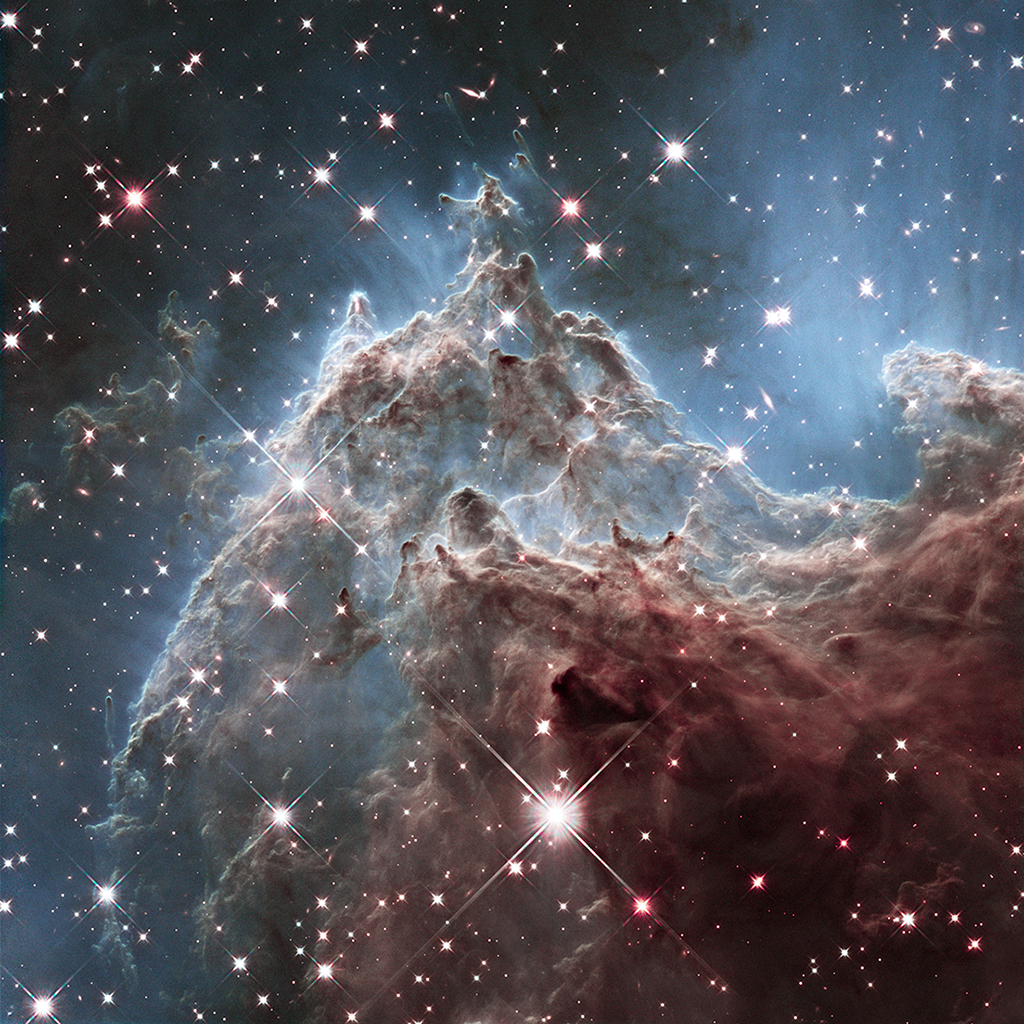NGC 2174的云山
2021年01月16日
The Mountains of NGC 2174
Image Credit: NASA, ESA, Hubble Heritage Team (STScI/AURA)
Explanation: This fantastic skyscape lies near the edge of NGC 2174 a star forming region about 6,400 light-years away in the nebula-rich constellation of Orion. It follows mountainous clouds of gas and dust carved by winds and radiation from the region’s newborn stars, now found scattered in open star clusters embedded around the center of NGC 2174, off the top of the frame. Though star formation continues within these dusty cosmic clouds they will likely be dispersed by the energetic newborn stars within a few million years. Recorded at infrared wavelengths by the Hubble Space Telescope in 2014, the interstellar scene spans about 6 light-years. Scheduled for launch in 2021, the James Webb Space Telescope is optimized for exploring the Universe at infrared wavelengths.
Tomorrow’s picture: active galaxy
NGC 2174的云山
影像提供: NASA, ESA, Hubble Heritage Team (STScI/AURA)
说明: 这片位在星云拥挤猎户座内、恒星形成区NGC 2174边缘的精采星野,离我们约6,400光年远。影像所呈现的云气和尘埃云,散布在NGC 2174中心的众多星团之间,受到影像上缘外的恒星之恒星风和辐射的雕塑。虽然恒星持续诞生于这些尘埃云之内,但它们可能在数百万年之内,就会被这些新诞生恒星驱散。这片由哈勃太空望远镜摄于2014年的红外线星际景观,大约涵盖了6光年的区域。规画在2021年发射升空的詹姆斯·韦伯太空望远镜,即是最佳化在红外线波段探索宇宙。
明日的图片: active galaxy

